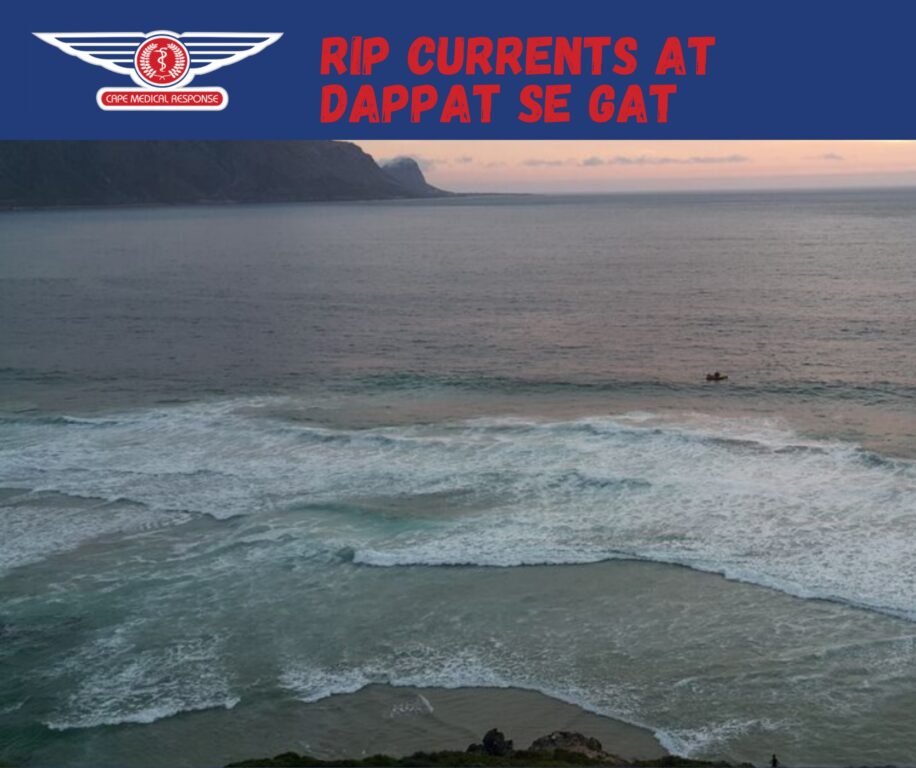A rip current is not the same as a rip tide which is formed as the tide ebbs and flows through a narrow opening such as an estuary. The Knysna Heads are a great example of where you will find extremely dangerous rip tides.
This is what you should look out for:
Water through a surf zone that is a different colour to the surrounding water
A change in the incoming pattern of waves (often the waves are not breaking in a rip channel).
Seaweed, sand ‘clouds’ or debris moving out to the backline where waves are forming through the surf zone
Turbulent or choppy water in the surf zone in a channel or river like shape flowing away from the beach
If avoidance fails: If you are caught in a rip current the most important thing to remember is: Do not panic. Stay calm and force yourself to relax. You are not going to win a fight with the ocean.
Swim slowly and conservatively out of the current or relax and let it carry you out past the breakers until it slacks.
Take note from looking at the beach of the direction that the current is pulling you, think of it like a river and remember to get out of a river you would swim to the river bank. This means that in a rip current you should swim at 90 degrees to the direction that you are being pulled and then use the waves to help you get back to the beach.
A rip current will not pull you under the water. So long as you can float you will be safe until you can escape the current, by swimming to the side (out of it) and then back to the beach. Be sure to maintain a slow and relaxed pace until you reach the shore or assistance arrives.
LEARN MORE: https://www.nsri.org.za/water-safety/all-about-rip-currents/
